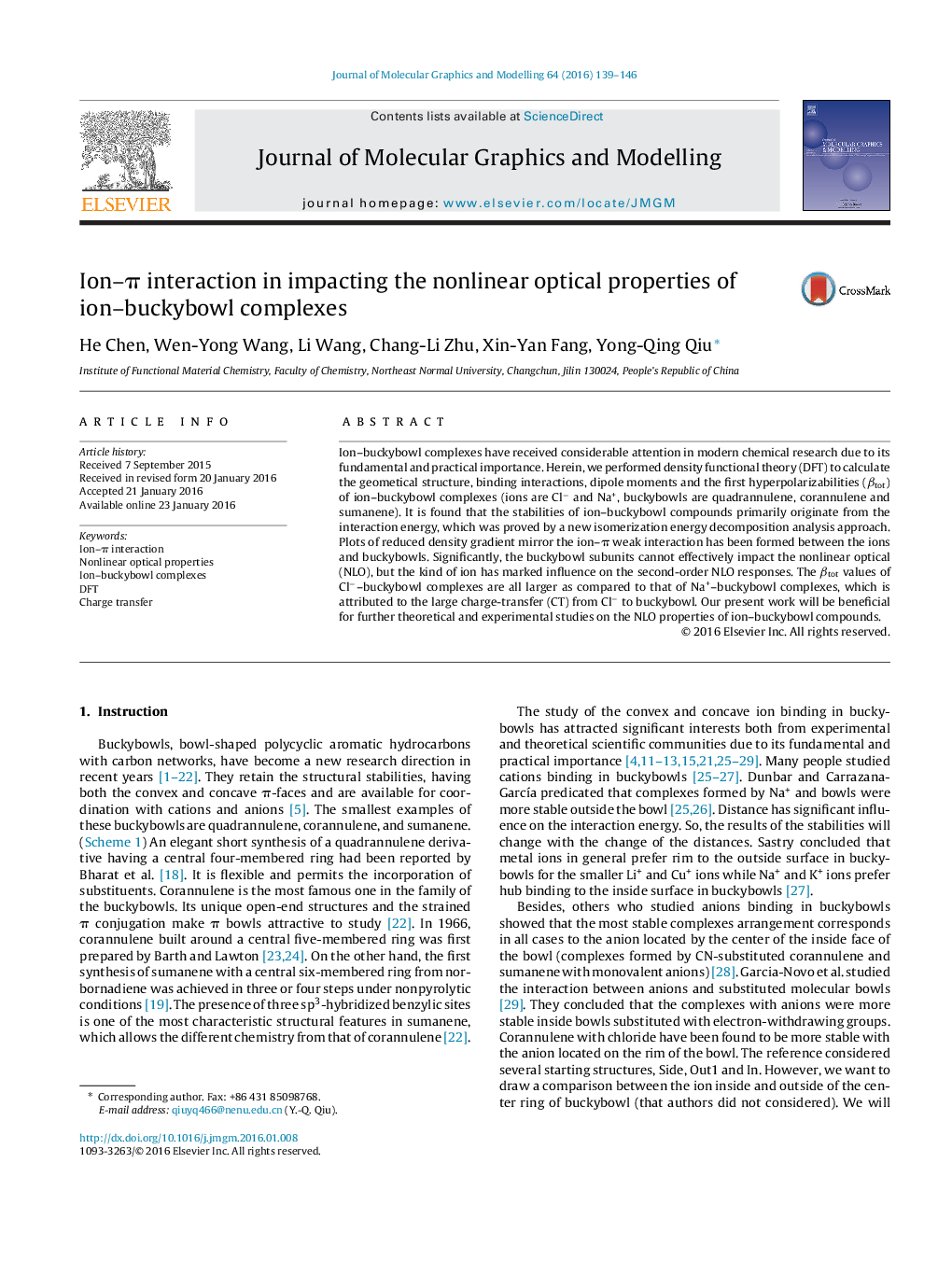| کد مقاله | کد نشریه | سال انتشار | مقاله انگلیسی | نسخه تمام متن |
|---|---|---|---|---|
| 442872 | 692413 | 2016 | 8 صفحه PDF | دانلود رایگان |
• The interaction formed in ion–buckybowl complexes is weak ion–π interaction.
• Cl− ion has marked influence on the NLO responses as compared to Na+.
• The difference on NLO property is due to a change in the charge transfer pattern.
Ion–buckybowl complexes have received considerable attention in modern chemical research due to its fundamental and practical importance. Herein, we performed density functional theory (DFT) to calculate the geometical structure, binding interactions, dipole moments and the first hyperpolarizabilities (βtot) of ion–buckybowl complexes (ions are Cl− and Na+, buckybowls are quadrannulene, corannulene and sumanene). It is found that the stabilities of ion–buckybowl compounds primarily originate from the interaction energy, which was proved by a new isomerization energy decomposition analysis approach. Plots of reduced density gradient mirror the ion–π weak interaction has been formed between the ions and buckybowls. Significantly, the buckybowl subunits cannot effectively impact the nonlinear optical (NLO), but the kind of ion has marked influence on the second-order NLO responses. The βtot values of Cl−–buckybowl complexes are all larger as compared to that of Na+–buckybowl complexes, which is attributed to the large charge-transfer (CT) from Cl− to buckybowl. Our present work will be beneficial for further theoretical and experimental studies on the NLO properties of ion–buckybowl compounds.
Ion–π weak interaction has been formed between the ions and buckybowls. And the first hyperpolarizabilities (βtot) of Cl−-buckybowl complexes are all larger as compared to that of Na+–buckybowl complexes, which is attributed to the large charge-transfer from Cl− to buckybowl.Figure optionsDownload high-quality image (119 K)Download as PowerPoint slide
Journal: Journal of Molecular Graphics and Modelling - Volume 64, March 2016, Pages 139–146
